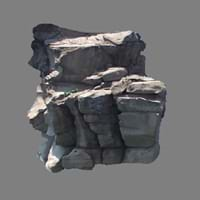Comendite and Rhyolite
Definition
Definition
Comendite is a hard, peralkaline igneous rock, a type of light blue grey rhyolite
Rhyolite is a fine-grained igneous rock which is rich in silica
History
Origin
Italy
North America
Discoverer
Unknown
Ferdinand von Richthofen
Etymology
Comendite derives its name from the area of Le Commende on San Pietro Island in Italy
From German Rhyolit, from Greek rhuax lava stream + lithos stone
Class
Igneous Rocks
Igneous Rocks
Sub-Class
Durable Rock, Hard Rock
Durable Rock, Hard Rock
Family
Group
Volcanic
Volcanic
Other Categories
Medium Grained Rock, Opaque Rock
Coarse Grained Rock, Opaque Rock
Texture
Texture
Porphyritic
Aphanitic, Glassy, Porphyritic
Color
Blue, Bluish - Grey
Grey, White, Light Black
Maintenance
Less
More
Durability
Durable
Durable
Water Resistant
Yes
Yes
Scratch Resistant
Yes
Yes
Stain Resistant
Yes
Yes
Wind Resistant
Yes
Yes
Acid Resistant
Yes
Yes
Appearance
Foliated
Banded
Uses
Architecture
Interior Uses
Countertops, Decorative Aggregates, Interior Decoration
Decorative Aggregates, Homes, Hotels, Interior Decoration, Kitchens
Exterior Uses
As Building Stone, As Facing Stone, Garden Decoration
As Building Stone, As Facing Stone, Paving Stone, Office Buildings
Other Architectural Uses
Curbing
Not Yet Used
Industry
Construction Industry
Building houses or walls, Cement Manufacture, Construction Aggregate, for Road Aggregate, Landscaping, Making natural cement, Raw material for the manufacture of mortar
Arrowheads, As Dimension Stone, Building houses or walls, Construction Aggregate, Cutting Tool, for Road Aggregate, Knives
Medical Industry
Not Yet Used
Not Yet Used
Antiquity Uses
Artifacts
Artifacts
Other Uses
Commercial Uses
Cemetery Markers
Gemstone, Laboratory bench tops, Jewelry
Types
Types
Rhyolite
Pumice Rocks, Obsidian Rocks, Perlite Rocks, Porphyritic Rocks.
Features
Very fine grained rock, It is One of the Oldest, Strongest and Hardest Rock
Acidic in nature, Available in lots of colors
Archaeological Significance
Monuments
Not Yet Used
Not Yet Used
Famous Monuments
Not Applicable
Not Applicable
Sculpture
Not Yet Used
Not Yet Used
Famous Sculptures
Not Applicable
Not Applicable
Pictographs
Not Used
Not Used
Petroglyphs
Not Used
Not Used
Figurines
Not Yet Used
Not Yet Used
Fossils
Absent
Absent
Formation
Formation
Comendite is a type of Igneous rock which is formed due to cooling and solidification of lava or magma. It may form with or without crystallization, either below the surface as intrusive rocks or on the surface as extrusive rocks.
Rhyolite is a felsic extrusive rock and due to its high silica content, rhyolite lava is very viscous and is volcanic equivalent of granite.
Composition
Mineral Content
Albite, Amphibole, Quartz
Biotite, Feldspar, Hornblade, Plagioclase, Pyroxene, Quartz
Compound Content
Al, Fe, Potassium Oxide
Ca, Fe, Potassium Oxide, Mg, Potassium, Silicon Dioxide, Sodium
Transformation
Metamorphism
Yes
Yes
Types of Metamorphism
Cataclastic Metamorphism, Regional Metamorphism
Burial Metamorphism, Cataclastic Metamorphism, Regional Metamorphism
Weathering
Yes
Yes
Types of Weathering
Biological Weathering, Chemical Weathering, Mechanical Weathering
Biological Weathering, Chemical Weathering, Mechanical Weathering
Erosion
Yes
Yes
Types of Erosion
Coastal Erosion, Water Erosion
Chemical Erosion, Sea Erosion, Water Erosion, Wind Erosion
Properties
Physical Properties
Hardness
6-7
6-7
Grain Size
Medium Grained
Large and Coarse Grained
Fracture
Pervasive
Sub-conchoidal
Streak
Bluish Black
Colorless
Porosity
Highly Porous
Highly Porous
Luster
Dull
Earthy
Compressive Strength
92.40 N/mm2
21
140.00 N/mm2
15
Cleavage
Not Available
Not Available
Toughness
2
2
Specific Gravity
2.38
2.65-2.67
Transparency
Opaque
Opaque
Density
Not Available
2.4-2.6 g/cm3
Thermal Properties
Resistance
Heat Resistant, Impact Resistant
Heat Resistant, Wear Resistant
Reserves
Deposits in Eastern Continents
Asia
China
China, India
Africa
East Africa
Angola, Egypt, Madagascar, Namibia, Nigeria, South Africa
Europe
Italy
Germany, Iceland, Ireland, Italy, Spain
Others
Not Yet Found
Not Yet Found
Deposits in Western Continents
North America
Not Yet Found
Canada, USA
South America
Not Yet Found
Argentina, Bolivia, Chile, Colombia, Ecuador, Peru, Venezuela
Deposits in Oceania Continent
Australia
Queensland
New Zealand, Queensland, Western Australia
All about Comendite and Rhyolite Properties
Know all about Comendite and Rhyolite properties here. All properties of rocks are important as they define the type of rock and its application. Comendite and Rhyolite belong to Igneous Rocks.Texture of Comendite is Porphyritic whereas that of Rhyolite is Aphanitic, Glassy, Porphyritic. Comendite appears Foliated and Rhyolite appears Banded. The luster of Comendite is dull while that of Rhyolite is earthy. Comendite is available in blue, bluish - grey colors whereas Rhyolite is available in grey, white, light black colors. The commercial uses of Comendite are cemetery markers and that of Rhyolite are gemstone, laboratory bench tops, jewelry.
|
||
|
||
|










